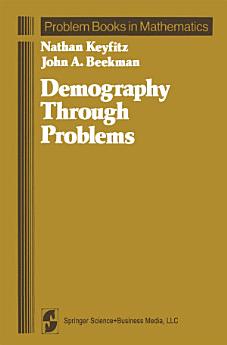Demography Through Problems
มี.ค. 2013 · Springer Science & Business Media
eBook
142
หน้า
reportคะแนนและรีวิวไม่ได้รับการตรวจสอบยืนยัน ดูข้อมูลเพิ่มเติม
เกี่ยวกับ eBook เล่มนี้
The book that follows is an experiment in the teaching of population theory and analysis. A sequence of problems where each is a self-contained puzzle, and the successful solution of each which puts the student in a position to tackle the next, is a means of securing the active participation of the learner and so the mastery of a technical subject. How far our questions are the exciting puzzles at which we aimed, and how far the sequence constitutes a rounded course in demography, must be left to the user to judge. One test of a good problem is whether a solution, that may take hours of cogitation, is immediately recognizable once it comes to mind. While algebraic manipulation is required throughout, we have tried to emphasize problems in which there is some substantive point-a conclusion regarding population that can be put into words. Our title, Demography Through Problems, reflects our intention of leading the reader who will actively commit him-or herself through a sequence that will not only teach definitions-in itself a trivial matter-but sharpen intuition on the way that populations behave.
ให้คะแนน eBook นี้
แสดงความเห็นของคุณให้เรารับรู้
ข้อมูลในการอ่าน
สมาร์ทโฟนและแท็บเล็ต
ติดตั้งแอป Google Play Books สำหรับ Android และ iPad/iPhone แอปจะซิงค์โดยอัตโนมัติกับบัญชีของคุณ และช่วยให้คุณอ่านแบบออนไลน์หรือออฟไลน์ได้ทุกที่
แล็ปท็อปและคอมพิวเตอร์
คุณฟังหนังสือเสียงที่ซื้อจาก Google Play โดยใช้เว็บเบราว์เซอร์ในคอมพิวเตอร์ได้
eReader และอุปกรณ์อื่นๆ
หากต้องการอ่านบนอุปกรณ์ e-ink เช่น Kobo eReader คุณจะต้องดาวน์โหลดและโอนไฟล์ไปยังอุปกรณ์ของคุณ โปรดทำตามวิธีการอย่างละเอียดในศูนย์ช่วยเหลือเพื่อโอนไฟล์ไปยัง eReader ที่รองรับ






